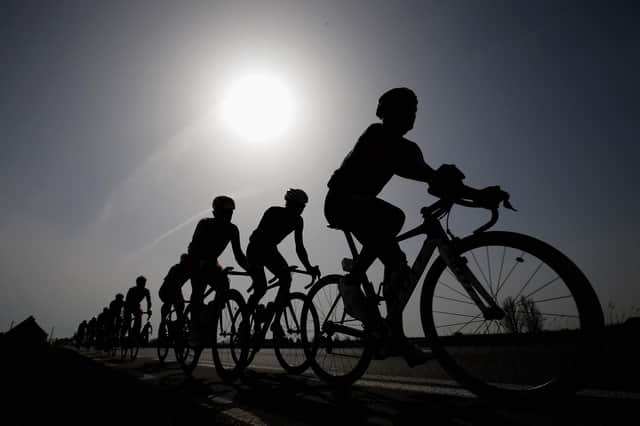Cycling boom means rules of the road must be more rigorously enforced – Tom Wood


The two passengers and the rider were seriously injured and the car driver faces prosecution, so least said. But it was a reminder of just how vulnerable cyclists can be.
It also reminded me of a near miss I had. In the half-dark of late afternoon, I was driving in Edinburgh, slowing as I approached a red light when, out of nowhere, a cyclist cut across my path, missing me by inches.
Advertisement
Hide AdAdvertisement
Hide AdFrom the glimpse I got, I could see the bike was stripped down, without lights and being ridden fast. The rider wore dark clothing and no protective headgear.
After I got my breath back, I began to consider what would have happened if we had collided. As a lifelong motorcyclist, I know what happens when two wheels hit four. Two wheels invariably comes of worst. The cyclist who almost hit me would certainly have been injured, perhaps seriously.
Would I have enjoyed the presumption of innocence, or would it have been a case of two wheels good – four wheels guilty?
And what about insurance liability, would my cyclist have been covered for third party risk? Unlikely. It’s no comfort that dozens of legal claims companies tout online for business to make injury compensation claims on behalf of cyclists against motorists. Vulnerability cuts both ways.
The way we regulate road users is largely historical and oddly imbalanced.
The stark fact is that while all motor vehicles require registration, a licence to drive them and insurance cover, bicycles, even electric-powered ones, require none of these. Cyclists are not even legally required to wear protective headgear.
This is becoming more important because as pedal power grows, the risks to all road users will increase.
The increase in cycling is a wholly positive development both from an environmental and health point of view but bringing together all road users safely requires careful, clever and consensual engineering.
Advertisement
Hide AdAdvertisement
Hide AdIf effort be praised, you cannot accuse our local councils of inactivity. It was hard not to notice that during lockdown considerable sums of our money has been spent on significant tinkering with our road system. Public toilets have been closed and sold but there appears no shortage of our cash to blanket our streets with cones, bollards, huge wooden planters and the most imaginative road markings.
Some of our road surfaces now resemble the map of the London Underground. Confusing doesn’t cover it and that’s dangerous.
During the pandemic, bike sales have gone through the roof and while our councils may have increased the amenity for cyclists they have not necessarily improved safety for them or the rest of us.
Most cyclists, like motorists and pedestrians, are considerate and law abiding, but for the few that are not we already have legal remedies.
There is no need for new legislation, the existing Road Traffic Acts have provision for cycling as well as motoring offences. It’s just that the cycling laws are seldom enforced.
As we enter this new era of many more bikes sharing spaces with the rest of us, a balance must be found. For all our sakes.
Tom Wood is a writer and former Deputy Chief Constable
A message from the Editor:
Thank you for reading this article. We're more reliant on your support than ever as the shift in consumer habits brought about by coronavirus impacts our advertisers.
If you haven't already, please consider supporting our trusted, fact-checked journalism by taking out a digital subscription.
Comments
Want to join the conversation? Please or to comment on this article.